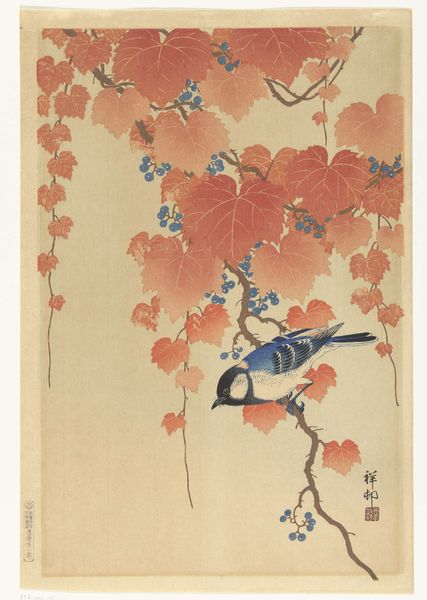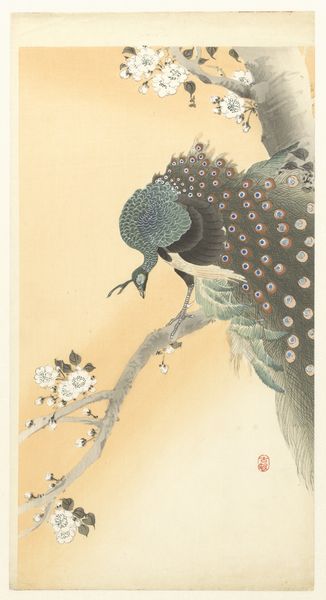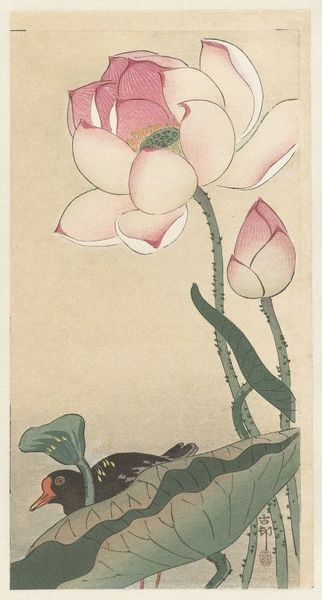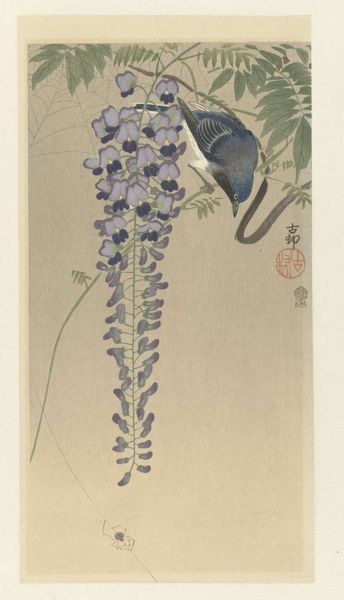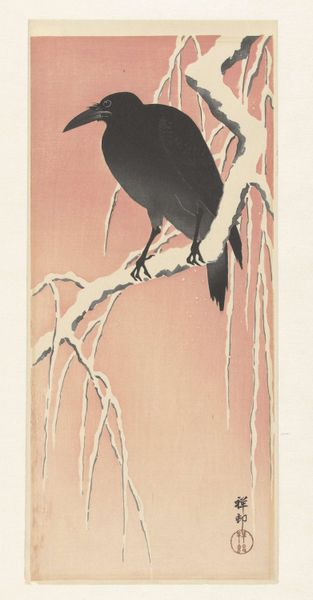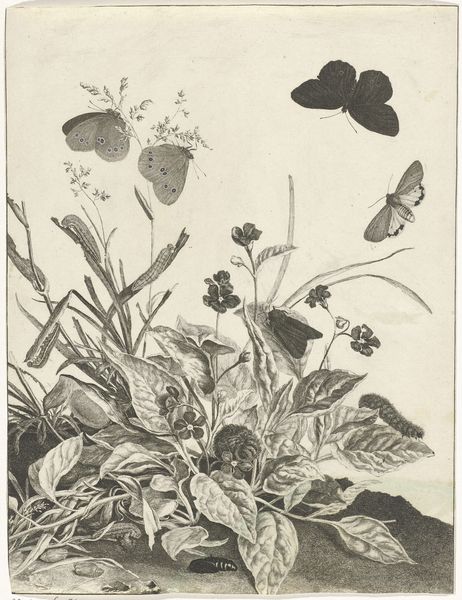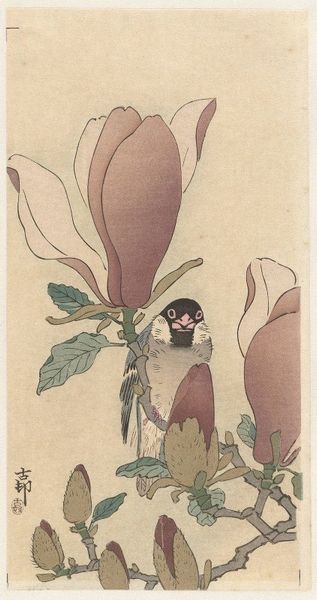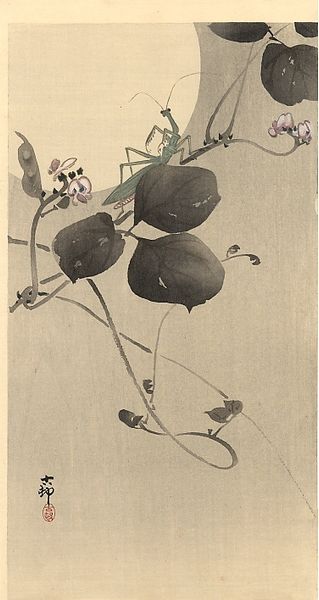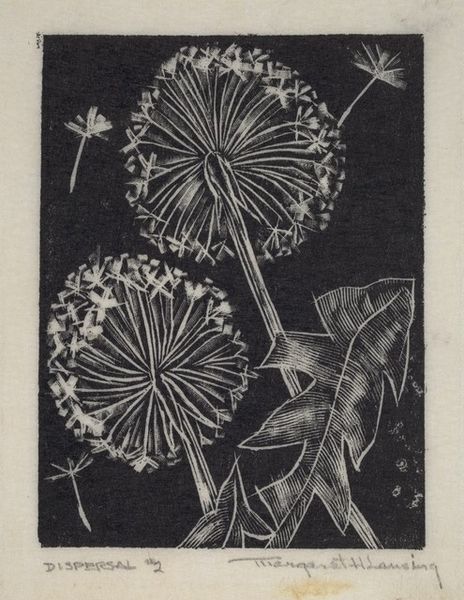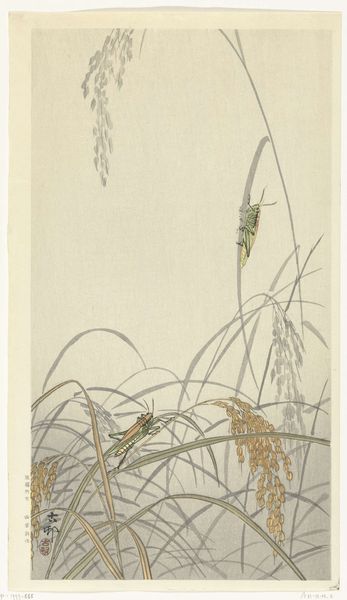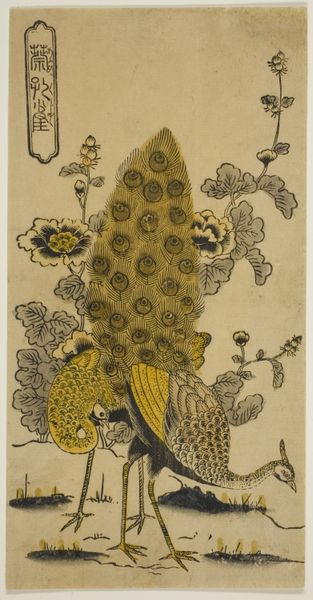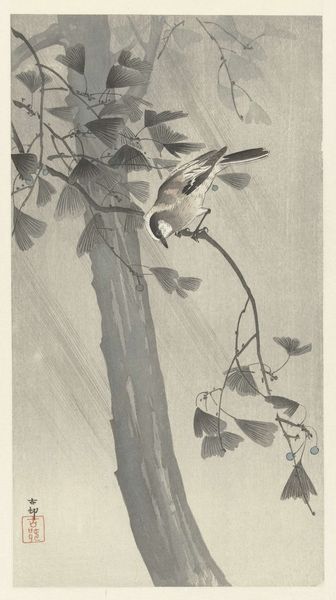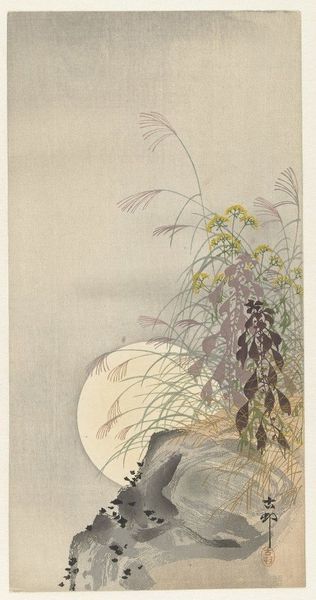
Dimensions: height 300 mm, width 150 mm
Copyright: Rijks Museum: Open Domain
Editor: We’re looking at “Japanese Wagtail on Lotus Plant” by Ohara Koson, likely a watercolor painting done between 1925 and 1936. The composition is very vertical, and I’m immediately drawn to the bird’s posture, so delicately perched on the lotus stem. How would you interpret this piece? Curator: The Wagtail acts as a messenger between realms. Consider the lotus; rooted in muddy water, yet it blossoms towards the heavens, a symbol of purity and enlightenment in Eastern traditions. The bird, alighting on its stem, becomes the connecting element between the earthly and spiritual planes. The withering lotus leaves signify decay and rebirth, part of the natural cycle. Do you think that this is relevant? Editor: I see your point. It's interesting to consider the cyclical nature of life represented here, particularly with the juxtaposition of the vibrant bird against the decaying lotus leaves. What about the bird itself? Curator: Wagtails are known for their constant movement, flitting about. This embodies adaptability and freedom, and also vigilance, as their eyes keep scanning the landscape for changes. Koson's precise detailing of the bird gives us not just a snapshot, but an encapsulation of character. Notice how the artist emphasizes these symbolic elements to connect the viewer with universal concepts. It creates a visual echo chamber, bouncing back with nuanced implications across the years. Editor: It's fascinating how much symbolism can be packed into such a simple image. Now, considering the context of Ukiyo-e, where does this painting fit? Curator: This work represents Shin-Hanga, the 'new prints' movement that revitalized traditional Ukiyo-e. It retained the woodblock printing techniques but incorporated more Western Impressionist sensibilities, such as atmospheric perspective. Editor: So it is a fusion of traditions! Thank you for shedding light on those underlying elements of nature and the cosmos. Curator: My pleasure! I’m taking with me today this new view of syncretism in Ohara Koson's work, too.
Comments
No comments
Be the first to comment and join the conversation on the ultimate creative platform.
